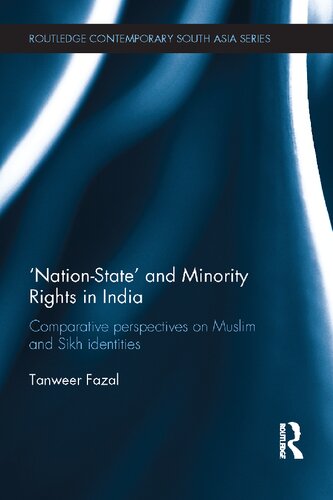

Most ebook files are in PDF format, so you can easily read them using various software such as Foxit Reader or directly on the Google Chrome browser.
Some ebook files are released by publishers in other formats such as .awz, .mobi, .epub, .fb2, etc. You may need to install specific software to read these formats on mobile/PC, such as Calibre.
Please read the tutorial at this link. https://ebooknice.com/page/post?id=faq
We offer FREE conversion to the popular formats you request; however, this may take some time. Therefore, right after payment, please email us, and we will try to provide the service as quickly as possible.
For some exceptional file formats or broken links (if any), please refrain from opening any disputes. Instead, email us first, and we will try to assist within a maximum of 6 hours.
EbookNice Team

Status:
Available0.0
0 reviewsThe blood-laden birth-pangs of the Indian "nation-state" undoubtedly had a bearing on the contentious issue of group rights for cultural minorities. Indeed, the trajectory of the concept ‘minority rights’ evolved amidst multiple conceptualizations, political posturing and violent mobilizations and outbursts. Accommodating minority groups posed a predicament for the fledgling "nation-state" of post-colonial India.
This book compares and contrasts Muslim and Sikh communities in pre- and post-Partition India. Mapping the evolving discourse on minority rights, the author looks at the overlaps between the Constitutional and the majoritarian discourse being articulated in the public sphere and poses questions about the guaranteeing of minority rights. The book suggests that through historical ruptures and breaks , communities oscillate between being minorities and nations. Combining archival material with ethnographic fieldwork, it studies the identity groups and their vexed relationship to the ideas of nation and nationalism. It captures meanings attributed to otherwise politically loaded concepts such as nation, nation-state and minority rights in the everyday world of Muslims and Sikhs and thus tries to make sense of the patterns of accommodation, adaptation and contestation in the life-world.
Successfully confronting and illuminating the challenge of reconciling representation and equality both for groups and within groups, this exploration of South Asian nationalisms and communal relations will be of interest to academics in the field of South Asian Studies, in particular Sociology and Politics.